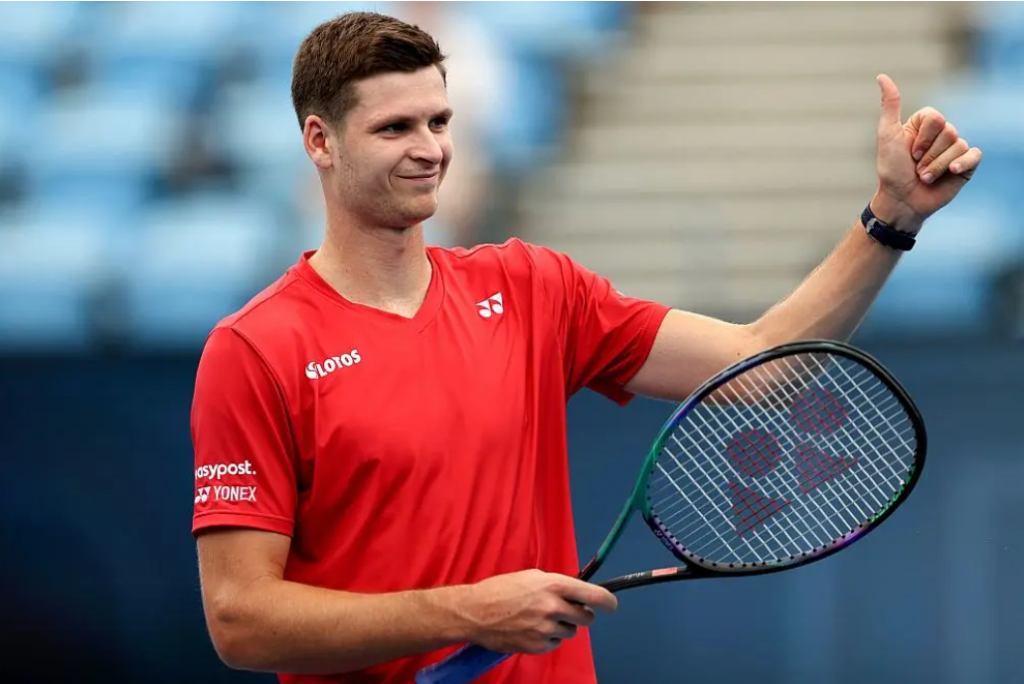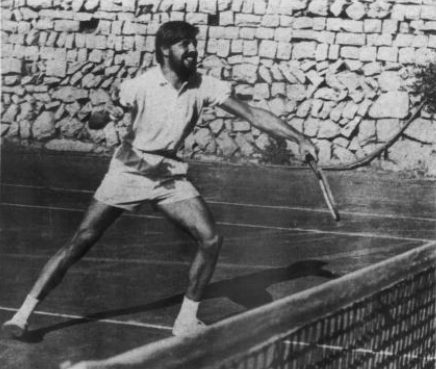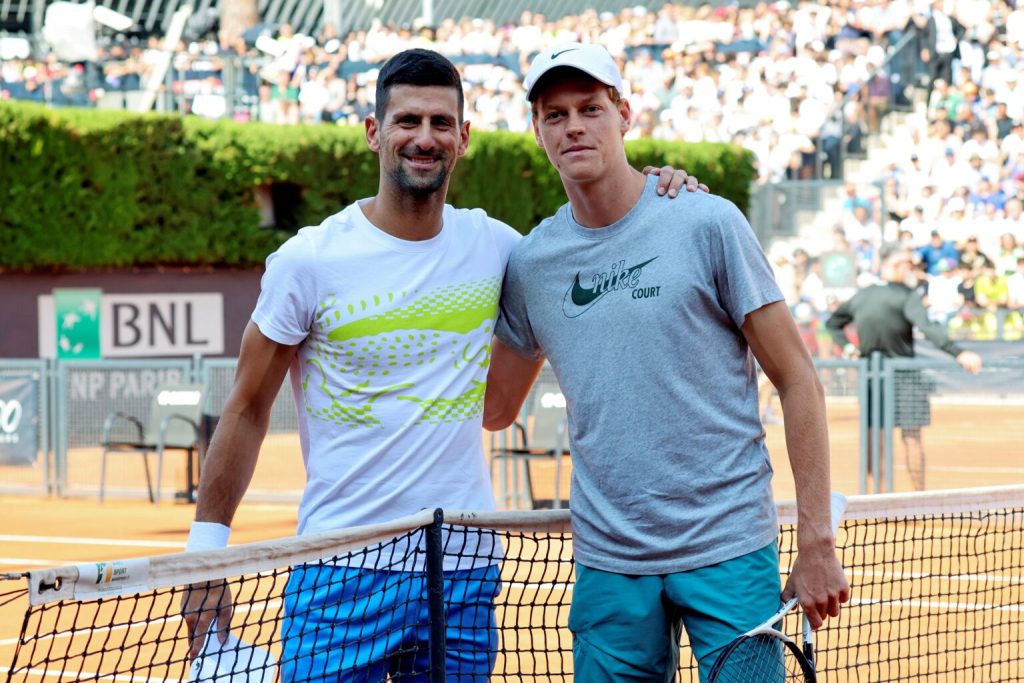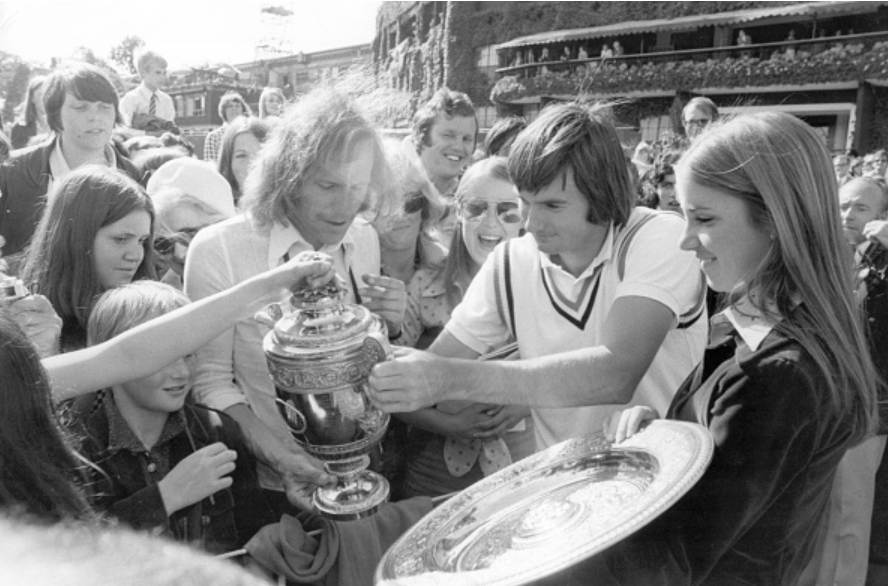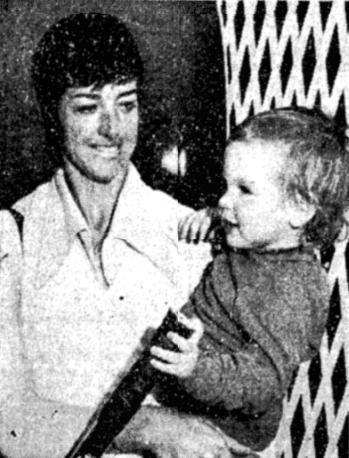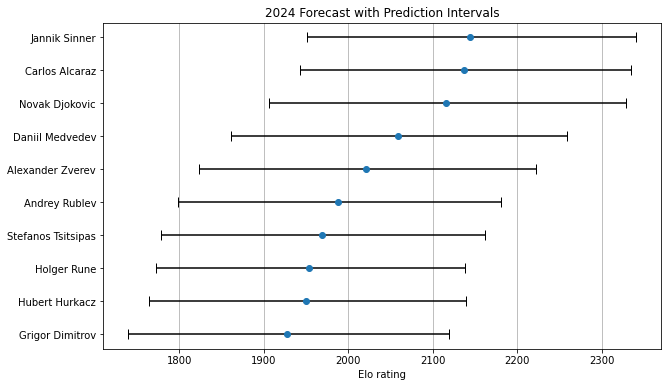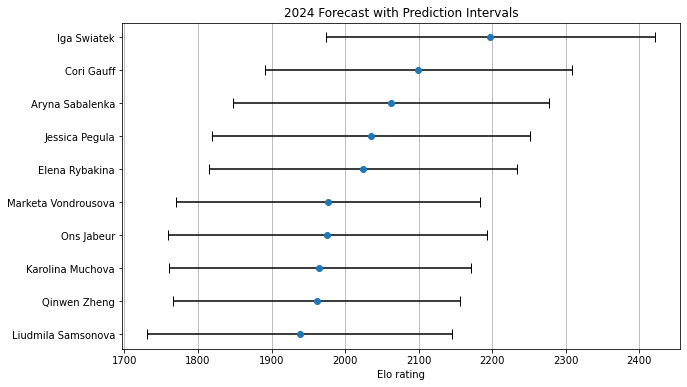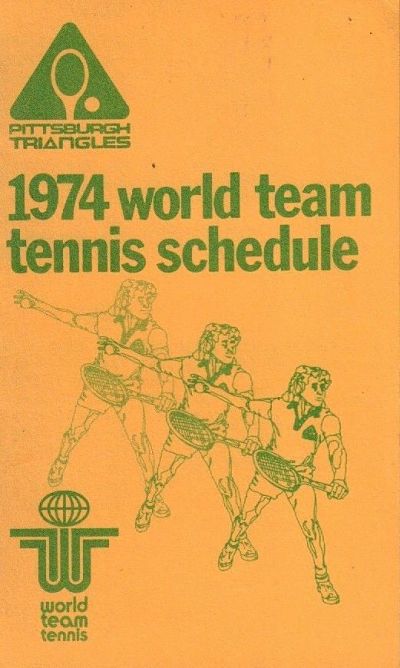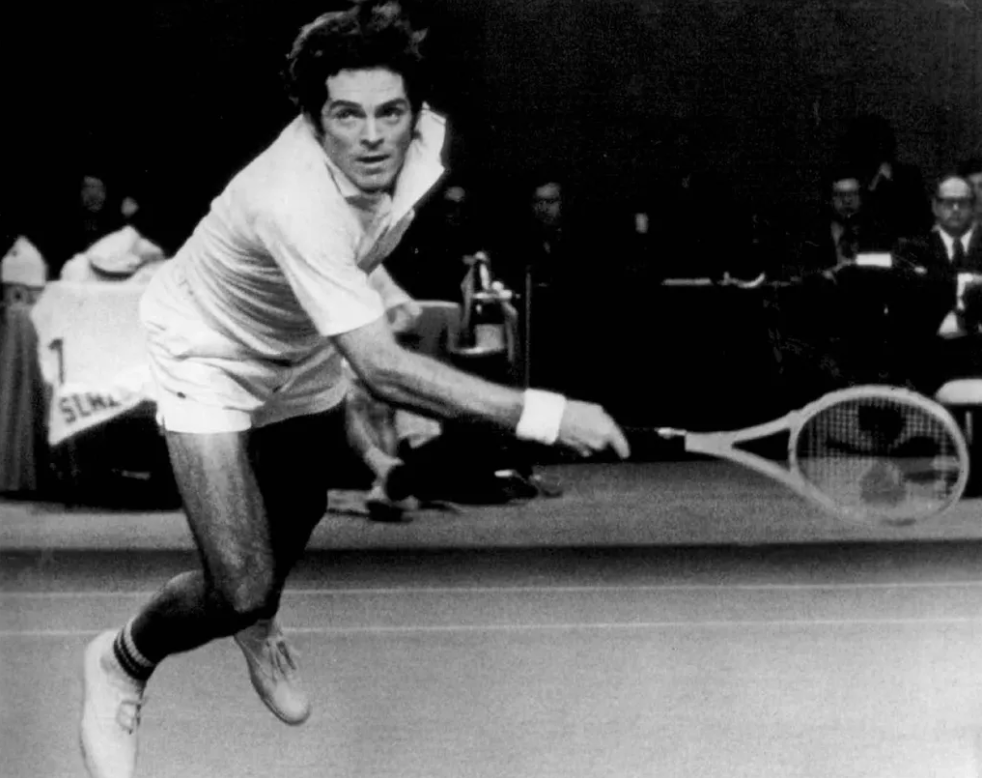Also today: Torben Ulrich (1928-2023); What is this?
Hubert Hurkacz started the 2024 season right where he left off. In the round-robin stage of the United Cup, he played two singles matches, beating Thiago Seyboth Wild and losing to Alejandro Davidovich Fokina. Both matches went to a third set.
No one played more deciding third sets in 2023 than Hurkacz. Out of 55 best-of-three starts, he went the distance 32 times. That’s more three-setters–and a higher rate of them (58%)–than any player-season this century. On average, about 35% of ATP matches go three. Since 2000, only 16 players have posted a full season where they went to a third set more than half the time.
This is new territory for the 26-year-old from Poland. He reached a decider in only 35% of his three-setters in 2021, then increased that clip to 45% in 2022. The main difference between his 2022 and 2023 seasons was that his already small margins shrunk even further. He won matches at almost the same rate both years, even though he broke a bit less often and was less effective with his second serve in 2023. He converted his three-setters at exactly the same rate (62.5%) in both seasons. Hurkacz’s edge was still enough to keep him in the top ten, but only because he was willing to play so much tennis.
It’s a bit fluky to pile up so many three-setters, but we can get a hint at some trends by looking at the list of similar warriors:
Year Player Bo3 Deciders Dec% 2023 Hubert Hurkacz 55 32 58.2% 2018 John Isner 40 23 57.5% 2022 Taylor Fritz 55 31 56.4% 2010 John Isner 48 27 56.3% 2019 Nikoloz Basilashvili 43 24 55.8% 2014 Guillermo Garcia Lopez 42 23 54.8% 2019 Fernando Verdasco 42 23 54.8% 2018 Robin Haase 46 25 54.3% 2009 Julien Benneteau 48 26 54.2% 2005 Jurgen Melzer 39 21 53.8% 2007 Dmitry Tursunov 41 22 53.7% 2017 Jack Sock 51 27 52.9% 2011 Stan Wawrinka 40 21 52.5% 2013 John Isner 52 27 51.9% 2017 Albert Ramos 54 28 51.9% 2018 Joao Sousa 45 23 51.1% 2000 Fernando Vicente 47 24 51.1% 2013 Robin Haase 49 25 51.0% 2003 Gaston Gaudio 55 28 50.9% 2006 Dmitry Tursunov 61 31 50.8%
There are plenty of clay-court grinders on the list; that doesn’t really apply to Hubi. What pops out to me are the three appearances of John Isner. While Hurkacz isn’t as one-dimensional as Big John, he has the same sort of profile. Only four other players in the current top 50–none of them in the top 15–break serve as rarely as he does. When breaks are scarce, sets go to tiebreaks and matches go three. An incredible 14 of Hubi’s 32 three-setters went to a sudden-death tiebreak. He won ten of them.
None of this is sustainable. In one sense, that’s bad news: If Hurkacz somehow lands in 14 more deciding-set tiebreaks this year, he’ll end up closer to 7-7 than 10-4. On the other hand, three-set stats are just trivia–exhausting trivia, at that. There wasn’t much to separate his top-line 2022 and 2023 results, and he’s surely be happy with another top-ten finish regardless of whether he needs to play 30-plus deciding sets to get there.
If Hubi does force so many third sets, is he likely to keep winning so many? That’s a more complicated question.
What is a good three-set record?
This is a great example of what’s missing from the tennis discourse. People talk about three-set records all the time, especially on broadcasts whenever two players head for a deciding set. We expect that top players win more one-set shootouts than journeymen do, but how many more? For a fringe top-tenner like Hurkacz, is 62.5% good? Great? Boringly in line with expectations?
What makes this tricky is that, anecdotally, there are so many different types of three-setters. Last year, Hurkacz went three with four different players ranked outside the top 100. We’d expect him to win those; it’s a bit disappointing he didn’t win them even more quickly. Hubi also went to three deciders against a number one: two with Carlos Alcaraz, one with Novak Djokovic. We wouldn’t expect him to win those (and he didn’t), but simply taking a set is a moral victory. Any list of 32 three-setters is going to include a bunch of matches that should never have gotten that far. There might be 32 different levels of expectations, if we want to break it down that far.
We don’t need to make it that complicated. What I want is a shorthand way of looking at a player’s three-set record and knowing whether he’s likely to keep it up.
It turns out that you get pretty close with a simple formula. Tour regulars–defined here as players with at least 50 ATP main-draw matches in a season–tend to win between 50% and 60% of their third-set deciders. (On average, they clean up against lower-ranked players with less time on tour, as you’d probably expect.) We can estimate what a player’s three-set record “should” be as follows:
Three-set win% = 45% + (20% * Two-set win%)
That’s it. A player’s winning percentage in straight-set matches is a decent approximation of their current level: While it’s possible to luck into a two-set victory, it’s unusual. Here’s what the model implies as likely three-set records at various skill levels:
Two-set W% Three-set W% 40% 52.9% 50% 54.9% 60% 56.9% 70% 58.8% 80% 60.8%
Three-set records are rarely so extreme as two-set records. Djokovic, for instance, went 20-2 (!) in two-setters last year. The model predicts that he would win 63% of his three-setters. In reality he went 11-4 (73%), outperforming the estimate but still coming in much closer to 50%, as logic would suggest. Three-setters tend to occur between more closely-matched players, and once the outcome comes down to a single set, luck plays a larger part. Deciding sets aren’t as coin-flippy as tiebreaks, but as Hurkacz’s 14 third-set shootouts remind us, the margins can be equally slim.
So, back to Hubi. Last year, he won 70% of his two-setters. A typical performance for a player like that would be a three-set winning percentage of 58.8%–a 19-13 record in deciders instead of his actual 20-12. Odd as his 2023 season was, he won the close ones about as often as he should have. Even if luck turns against him, he could finagle another top-ten finish with a stronger performance at the majors–but that’s a subject for another day.
* * *
Torben Ulrich (1928-2023)
In 1955, Torben Ulrich invited a couple of visiting South African tennis players, Gordon Forbes and Abe Segal, to come see his band at a jazz club in Copenhagen. Ulrich, manning the clarinet chair, sat out the first several numbers. Forbes wanted to see his friend in action and encouraged him to join in.
“I must wait,” Ulrich said, “until something happens inside me. So far nothing very much has happened.”
The red-headed, bearded Dane died last month at the age of 95. In his near-century on earth, a whole lot happened. Yet he always operated on his own timetable. He once walked off the court when an opponent wouldn’t stop lobbing. (“I had asked him nicely several times to stop it, but he told me to mind my own business.”) Gene Scott told another story:
There was this recent time in Richmond. There was this girl who was wearing a very short miniskirt. The whole house, including the players, could not keep their eyes off of her. Now, Torben is getting ready to serve when he suddenly freezes in midair, then walks over to the stands. Everybody is wondering where he’s going. He stops behind the girl and quickly drops a ball down her back. I know of no other player who has ever coped with a distraction in such a gentle, colorful way.
Forbes recalled a club member who was impatient for Ulrich to vacate a practice court:
‘Have you been playing long?’ [the member] said.
‘As long as I can remember,’ said Torben.
‘How much longer will you play?’ asked the member.
‘We may go on for many years,’ said Torben.
Ulrich did, indeed, go on for many years. He won his first tournament, the Danish Nationals, in 1948, when he was 19 years old. Three years later he picked up his first international singles title in Antwerp. He remained capable of top-level tennis for another two decades after that.
“Over the years, it seems he has never lost the key,” a fellow player told Sports Illustrated in 1969, when Torben was 40 years old. “When it looks like he is ready to come apart, he comes up with that one big match. He remains respectable.”
Ulrich was never a top-tenner; he failed to reach the quarter-finals of a major in 43 tries. Yet he piled up dozens of smaller tournament victories in singles, doubles, and mixed. He contested over 100 Davis Cup rubbers for Denmark, many of them alongside his younger brother, Jørgen.
The Dane was perhaps more at home in the world of art. At various times, he wrote poetry and music criticism, painted, and made films. This side of him had a greater influence on his legacy. His son, Lars, was a promising junior tennis player, but he was probably made the right decision when he shifted his focus to music and co-founded the band Metallica.
Torben, it seemed, was as happy with one pursuit as any other. He was a seeker–it didn’t much matter what. Tennis, with its whirlwind schedule and ever-changing mix of fellow-travelers, fit the bill.
He didn’t care about results. Once, he told Forbes that he didn’t win. “I simply played in the usual way,” he said. “It was my opponent who lost.”
Perhaps Ulrich’s career-best result came at the 1968 US Open, where he upset 15th seed Marty Riessen before falling to John Newcombe in a fourth-round nailbiter, 5-7, 4-6, 6-4, 10-8, 6-4. Newk’s serve could overpower a much younger man, but it was no match for Torben’s mind. “What is speed?” he mused. “If I am concentrating properly, really seeing, a big serve will be coming at me in slow motion.”
The match could have gone either way. At a crucial moment, Ulrich flubbed an easy volley when a butterfly darted in front of his face. Was he distracted? He silenced the press with a question of his own: “Was I then a man dreaming I was a butterfly, or am I now a butterfly dreaming I am a man?”
* * *
What is this?
After the Tennis 128 in 2022 and 1973 Redux last year, my plan is to return to contemporary tennis, with the usual hefty dose of analytics.
My goal is to write as much as possible about the game between the white lines, as opposed to forecasts, ratings, previews, business, and–heaven forbid–tennis personalities and politics.
I will also continue to look back to events from 50 years ago–and 100, and perhaps the occasional non-round number. 1974 was every bit as fascinating a season as 1973. I won’t do 100-plus installments, as I did last year, but I’ll revisit various pivotal moments as their anniversaries roll around, especially to commemorate the birth of World Team Tennis this summer.
You can expect to find a new post a couple of times a week, probably more often during the majors. Your suggestions for topics are always welcome. Comments are open (provisionally! I cannot emphasize enough how provisionally!), and I’ll add a “suggestion box” to the sidebar one of these days.
If you want to keep up with everything I’m doing here, please subscribe. Links to new article will also appear on the Tennis Abstract home page. I can’t promise I’ll always post links on Twitter.
Happy new year!
* * *
Subscribe to the blog to receive each new post by email:
